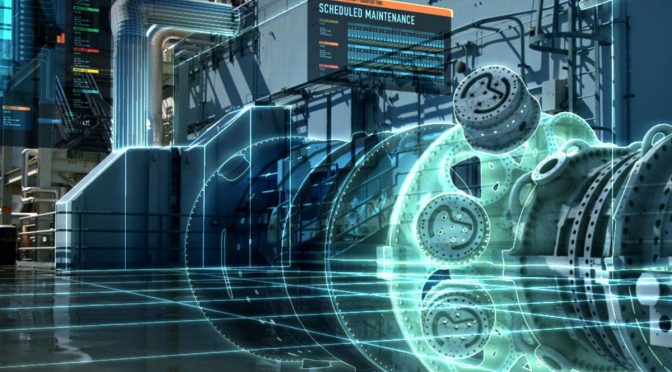
Fear of introducing innovations in maintenance and repair
Industry 4.0 technologies are changing the way MRO data is collected and processed. They help to monitor and predict the technical condition of assets in real time. And they create more cost-effective and efficient service models that focus on reliability.
With the right approach to the innovation process, you can extend the life of valuable assets, reduce downtime, and improve production stability.
So why, with all the benefits, digital transformation in MRO often remains on paper? Fear of innovation and reluctance to change the way things are done are key reasons.
Due to internal resistance, promising programs are phased out before they have time to demonstrate their effectiveness. Let’s take a look at the main myths about innovation that are holding back the digital transformation of MRO.
Too expensive
Similar statements can be heard since the beginning of industrial production. Early versions of technology always seem unreasonably expensive, yet companies continue to implement them. After all, tomorrow bold decisions may become the standard of doing business, although only yesterday they seemed too costly.
In the case of digital technology, the cost-benefit ratio plays into the hands of the customer. McKinsey research confirms this. Using the example of Artificial Intelligence, they showed how the introduction of innovations generates 122% growth in profits, more than offsetting the investment.
Statistics like these break the long-standing smart follower principle, where companies waited until innovation leaders provide them with a lower threshold for entry. Now such tactics may result in production lagging behind.
If at the Feasibility Study approval stage it still seems expensive to innovate, consider the scalability of most Industry 4.0 solutions. An enterprise can collect data on the state of equipment on its own, and implement forecasting using cloud Big Data analytics services.

The integration process is complex and lengthy
The myth is based on the fear of introducing new technologies without quality support from above. Negative experience tells MRO staff that the entire scope of work on the deployment and configuration of a new digital system will fall on their shoulders.
Added to this is the responsibility for economic losses due to production interruptions during integration. With this attitude, it is easier for MRO employees to protect existing solutions and slow down digital transformation.
– organizational and functional scope of work;
– human and resource capabilities of the enterprise;
– territorial distribution of assets;
– rating the importance of equipment for generating value;
– readiness of the infrastructure for the introduction of new technologies.
According to this plan, the digital transformation of maintenance and repair can be carried out in stages, tracking changes in key KPIs and making decisions about further deployment based on objective data. As a result, the production process remains uninterrupted and the digital transformation itself is less painful.
The effectiveness of the plan is enhanced by the use of specialized solutions for collecting operational and technical data, accounting and analyzing failures. SmartEAM has such tools in its arsenal, and our experience in integrating control systems allows us to carry out a digital transformation of MRO without prejudice to the production process.
Our specialists will lose their jobs
Perhaps the most common myth that generates resistance to innovation from MRO specialists. Here, two fears associated with new technologies are superimposed on each other.
The staff believes that the introduction of automation tools will make their diagnosis and prevention work unnecessary. And in order to adapt to working with new IT solutions, they lack the competence.
Let’s deal with each misconception separately and start with the fact that it is customary to exaggerate the need for personnel retraining. According to research by the World Economic Forum The Future of Jobs Report, specialists will have enough time to rethink the approach to their work. And many will not have to do this.

With the introduction of innovations in the field of maintenance and repair, the number of routine operations really decreases. But the list of job responsibilities is balanced with new tasks in a wide professional field:
– primary analysis and classification of data;
– work with artificial intelligence;
– monitoring of visualization tools of operational processes;
– advanced planning and optimization of service schedules.
According to the above study, 75 million jobs will disappear from the labor market by 2022, but they will be replaced by 133 million new jobs related to Industry 4.0.
At the same time, mastering the skills of working with digital MRO tools will not be so difficult. These are mobile service applications with an intuitive interface and user-friendly functionality. And to prepare specialists for more complex operations, you can always use augmented and virtual reality (AR / VR).
We’ll have to redo everything
In the era of Industry 4.0, the value of successful practical experience in asset management only increases.
It will not be possible to move to the digital transformation of MRO without a good foundation in the field of basic service practices.
Therefore, there is always a need:
– in solutions that have proven their effectiveness in the fight against downtime;
– in specialists who are able to determine the fundamental causes of equipment failures.
Digital transformation is not for us
So say companies that believe that innovations in the field of maintenance and repair are needed only by large transnational holdings with a large amount of initial data.
Practice proves that digital transformation gives positive results regardless of the scale of production and the technological level of equipment. A maintenance service built using the correct structure and modern technology is easier to maintain. Exactly as many resources are spent as required for production stability.
If there is no urgent need for a new strategy or you do not want to allocate large sums of money for the implementation of innovations, MRO optimization can be carried out in a pilot mode. Estimating ROI for each individual technology or process.
The main thing is to take the first step, because in the long term, optimization of maintenance and repair will ensure sustainable development of the enterprise. Which, according to global trends, is becoming more and more important in comparison with short-term benefits.





